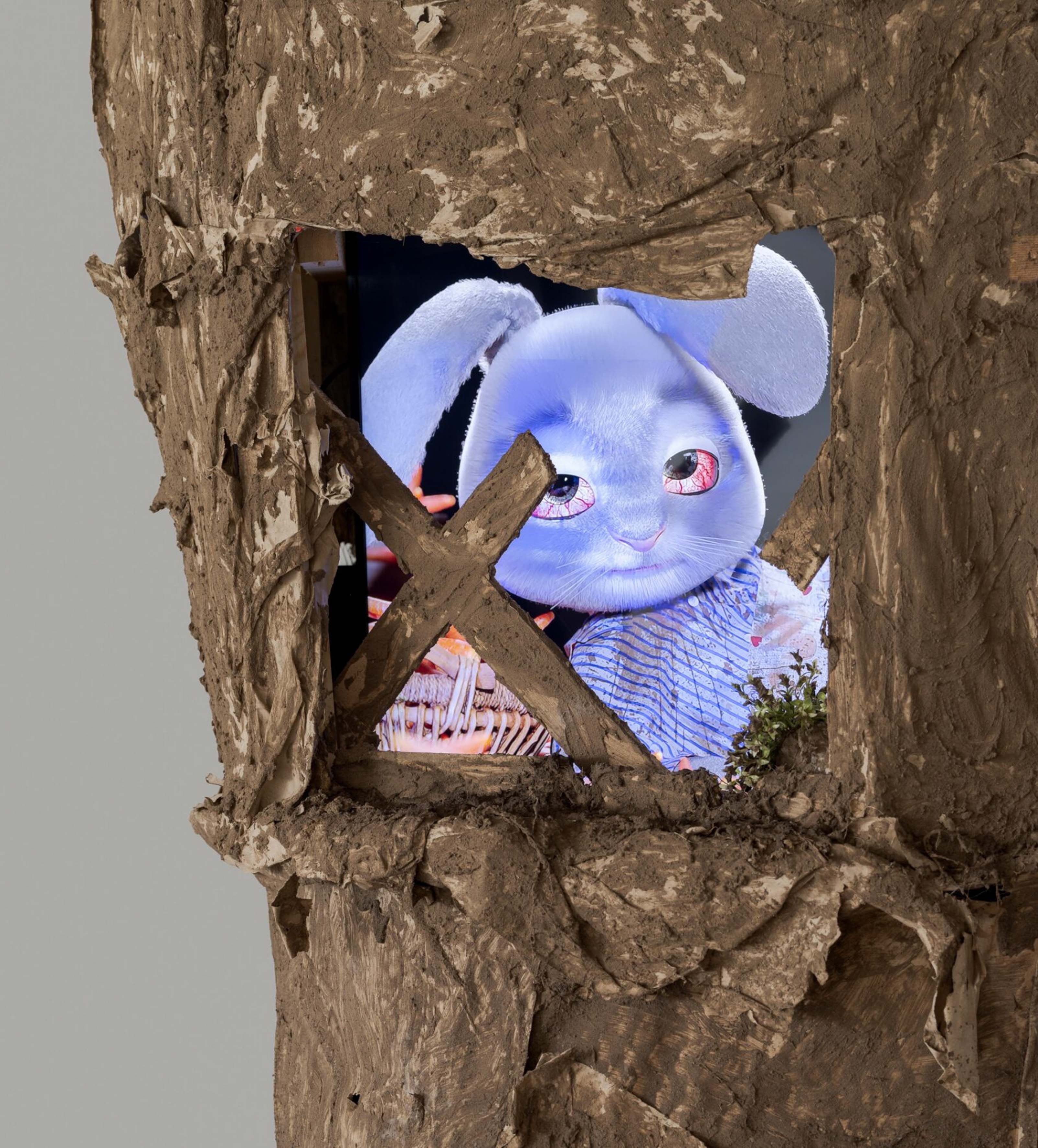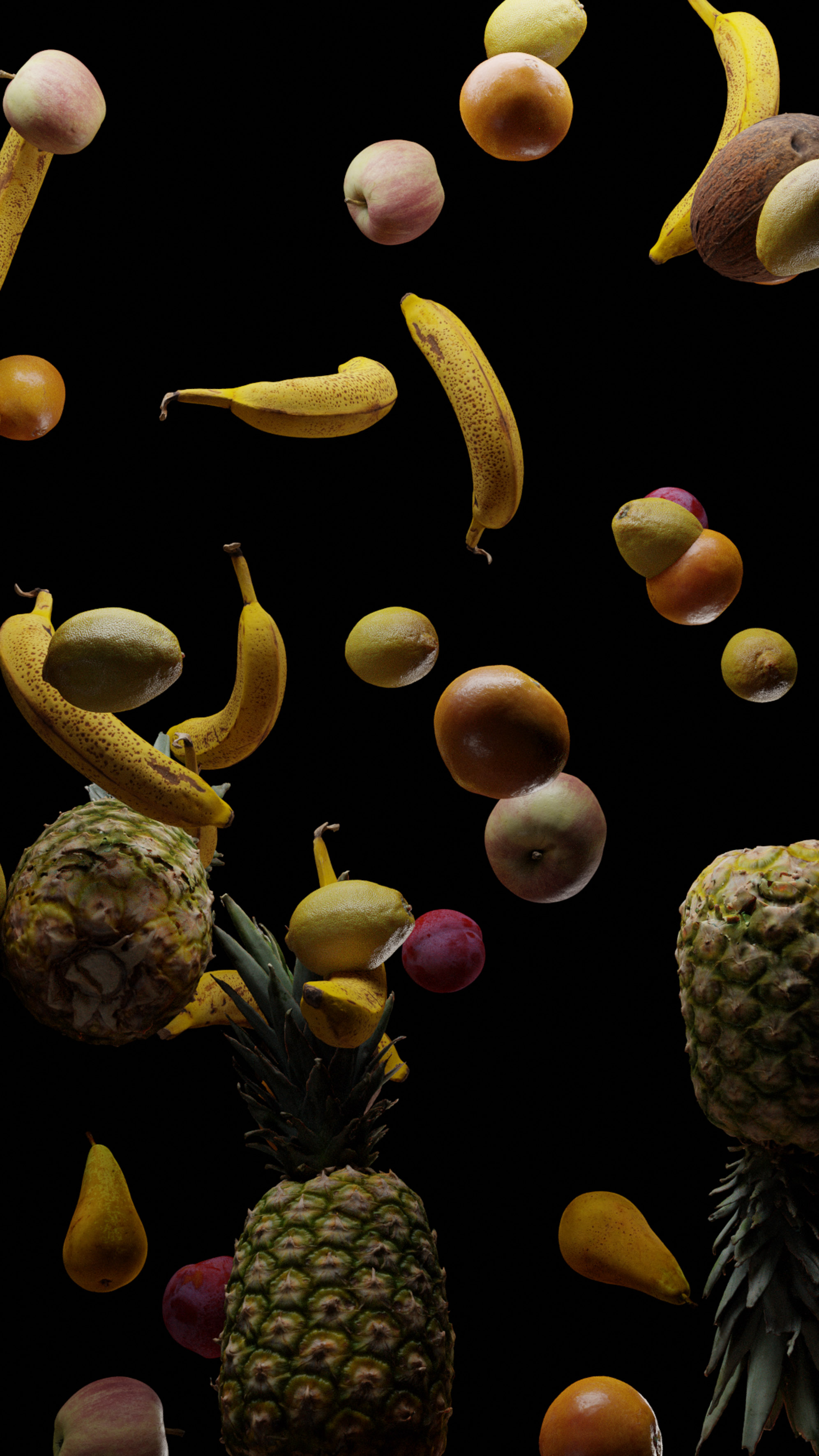YYYYMMDD >>> BACK HOME <<< >>> SELECTED FEATURES <<< >>> HIDDEN ARCHIVE <<<
[20230210]
CIVILIZASIA by STEFFEN JØRGENSEN at TRANEN [from 20230618 to 20231001]
[Photos: David Stjernholm]


















A train runs through a wasteland on an impoverished Earth. On the walls of Tranen we see the train passing over and over again in an endless loop, as if running in circles. The driver of the train and all its passengers are animals. It might be mistaken for Noah’s Ark, but the animals in the video installation Civilizasia look worn out. The only thing that seems to animate them is the rumbling train they are clinging to. This iconic machine of the Industrial Revolution is now chugging along without transporting anyone anywhere. There is no progress here – just the eternal return of the same. A giraffe, whose long neck has been thought to serve its pursuit of leaves in high trees, is drooping from the back of the train like a long tail. Its head beats rhythmically against the sleepers between the rails.
In his exhibition at Tranen, Danish artist Steffen Jørgensen unfolds an end-of-the-world scenario in line with today’s unease about what tomorrow may bring – or maybe simply in line with a world with no tomorrow. Whereas Noah invited animals on board in pairs so that they could reproduce, Steffen Jørgensen makes do with a single specimen of each species as if they were castrated pets.
In form and content, Steffen Jørgensen’s videos might strike the viewer as reminiscent of major animation productions by the likes of Disney and Pixar. But in the videos of Steffen Jørgensen, there is no happy ending. In fact, there is no ending at all, because there is neither plot nor action. Depression and apathy have set in. The scenario evokes a modern fable, but the animals on the train seem neither to sparkle with their unique attributes nor to have the capacity to play the role assigned to them in stories made up by humans. The fable does not teach us about the special nature of animals or humans. Given that the animals in Civilizasia have been snatched from their familiar surroundings, it is not only the animals that become homeless. We also lose the cogency of our own imagery. The exhibition presents a devastated, barren world created by humans for humans, where even our fictional animals seem out of place.
In the wasteland that extends across the space in front of the train, a cultural and natural landscape gets lost in mud. The only signs of life are feral animals, all of which resemble teddy bears and toys: a bear, a pig and a rabbit. They have adapted to their environment and moved into Steffen Jørgensen’s caricatured relics of a civilisation such as an oversized boot. Each of them is lying in their own little cell, playing with themselves, each illuminated by their own personal screen, connected in fervent communication. Even though the corner of the world that Steffen Jørgensen presents has ended, the stream of cultural industrial products and crazy stories goes on: some are incredible, but true; others pure fabrication. It is now difficult to distinguish between them.
As the pig convinces the bear and the rabbit, now you can say anything you want as long as you end with: “Thus Spoke Zarathustra”. None of them knows why, other than that “it sounds important.” The phrase is also the title of the philosopher Friedrich Nietzsche’s poetic tale of the Persian prophet who founded one of the first monotheistic religions. In the book, Zarathustra periodically leaves his cave to lecture people that God is dead, that morality is defunct, that one can no longer distinguish between good and evil, and that truths and values are something we must now create ourselves. But in Civilizasia no one is creating anything new. The passion that unites the gaming animals, delighting and exciting them, is encyclopaedic retellings of dystopian and post-apocalyptic games. In the absence of grand narratives such as religion and the idea of progress that construe life and the world, they pursue alternative stories that simultaneously enchant, explain and perpetuate the decay that is now their condition.
Steffen Jørgensen’s recycling of Nietzsche’s account of the Persian prophet is a piece of fanfiction based on fanfiction. But Civilizasia is grimmer than its Nietzschean source. In the exhibition, no prophet descends from the mountain extolling death and destruction as a prerequisite for something new to germinate and grow. Whenever the gaming animals occasionally break into song, a sneaky flower sprouts and pipes an accompaniment on a bone. The flower looks like a beautiful rising and setting sun, but the sound of its flute – like that of the Pied Piper of Hamelin – is as seductive as it is ominous. Its emergence is accompanied not by a brilliant idea, as when an apple fell onto Newton’s head, but by a shower of industrially produced fruits falling upwards – into the infinite space.
Steffen Jørgensen (1983, DK) studied at the Funen Art Academy, Odense and the Akademie der Bildenden Künste, Vienna. In Denmark, he is known for his work with the artists’ collective Years, and internationally for his collaboration with the US artist Will Benedict: for example, in the group exhibition DIS presents: What Do People Do All Day? at Tranen in 2020. Civilizasia is his first institutional exhibition in his own name.
Civilizasia is part of Tranen’s programme of extemporary art. The focus is on contemporary art that is not primarily focused on our contemporary condition. When everything from climate to technology evolves at ever greater pace, the present becomes ephemeral and intangible. The present starts to shrink. Meanwhile, our knowledge of the past increases. Speculations about the future abound. As part of this development, a lot of art is no longer contemporary — which literally means ‘with time.’ Instead, art is rather ‘extemporary’, i.e. ‘out of time’.
Special thanks to musician Janus Nevel Ringsted.
The exhibition is supported by the Danish Arts Council.
[Text: Toke Lykkeberg / Director of Tranen]
©YYYYMMDD All content and design by Daniela Grabosch + Ricardo Almeida Roque unless otherwise stated. Images, Videos and Texts can only be used under permission of the author(s).